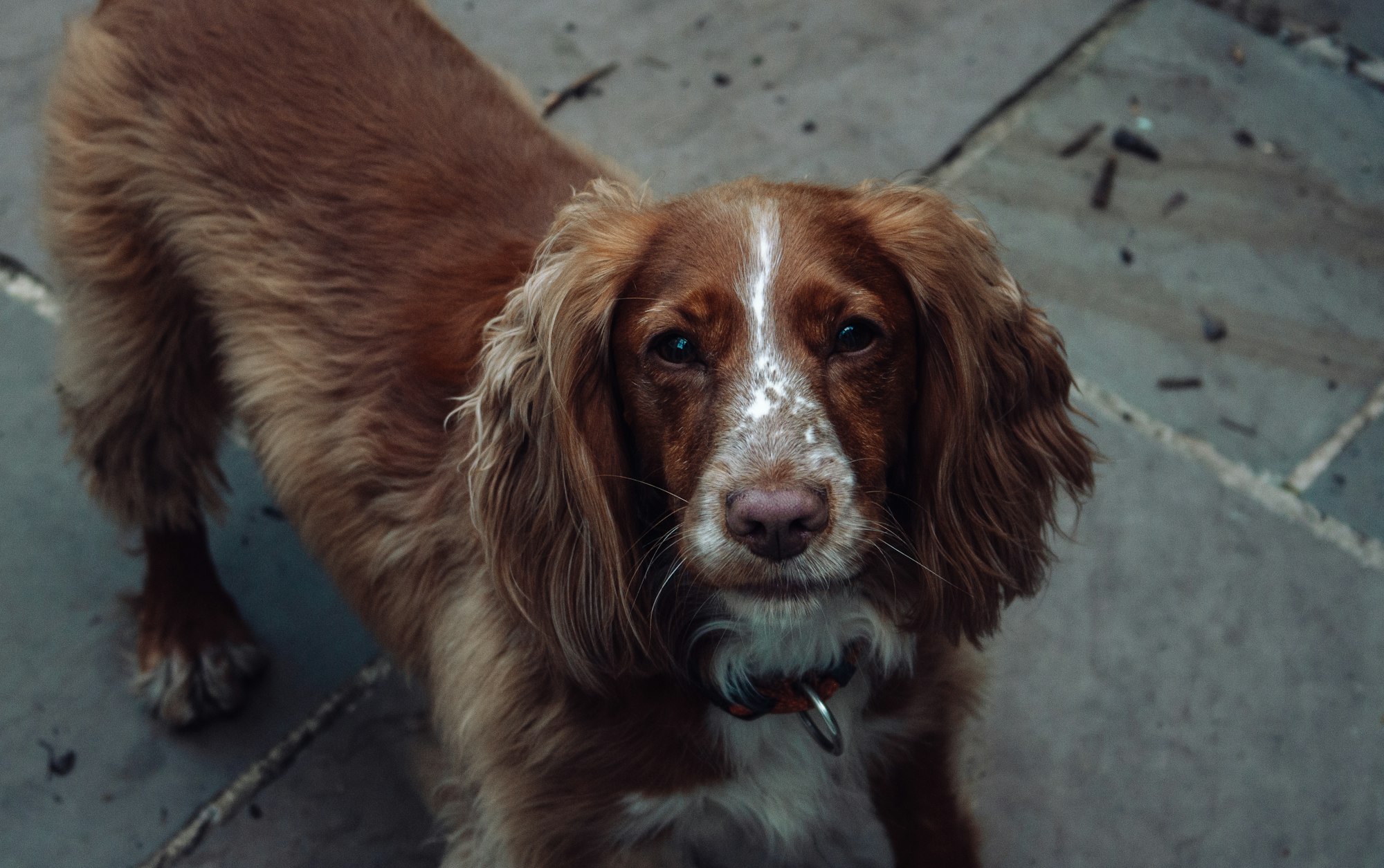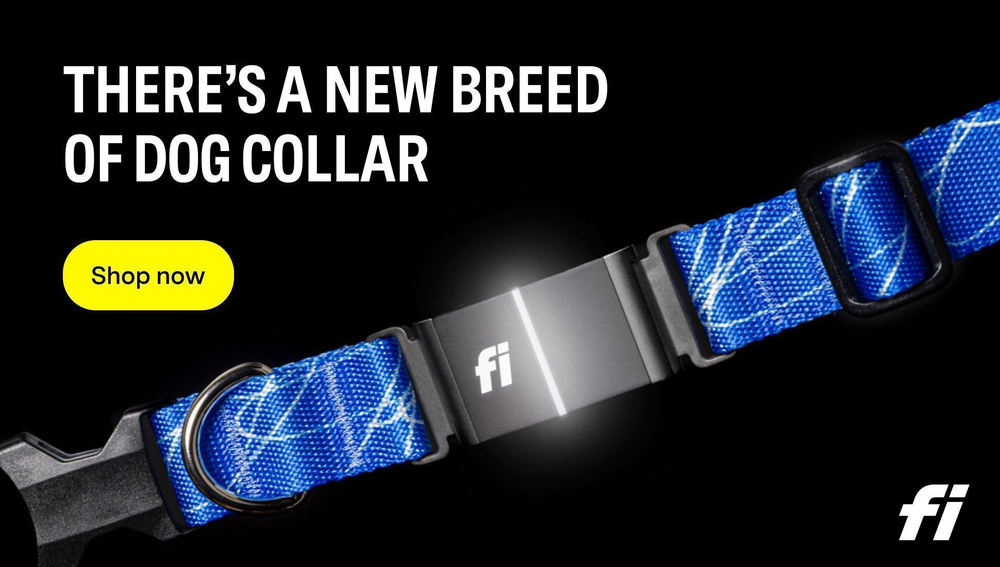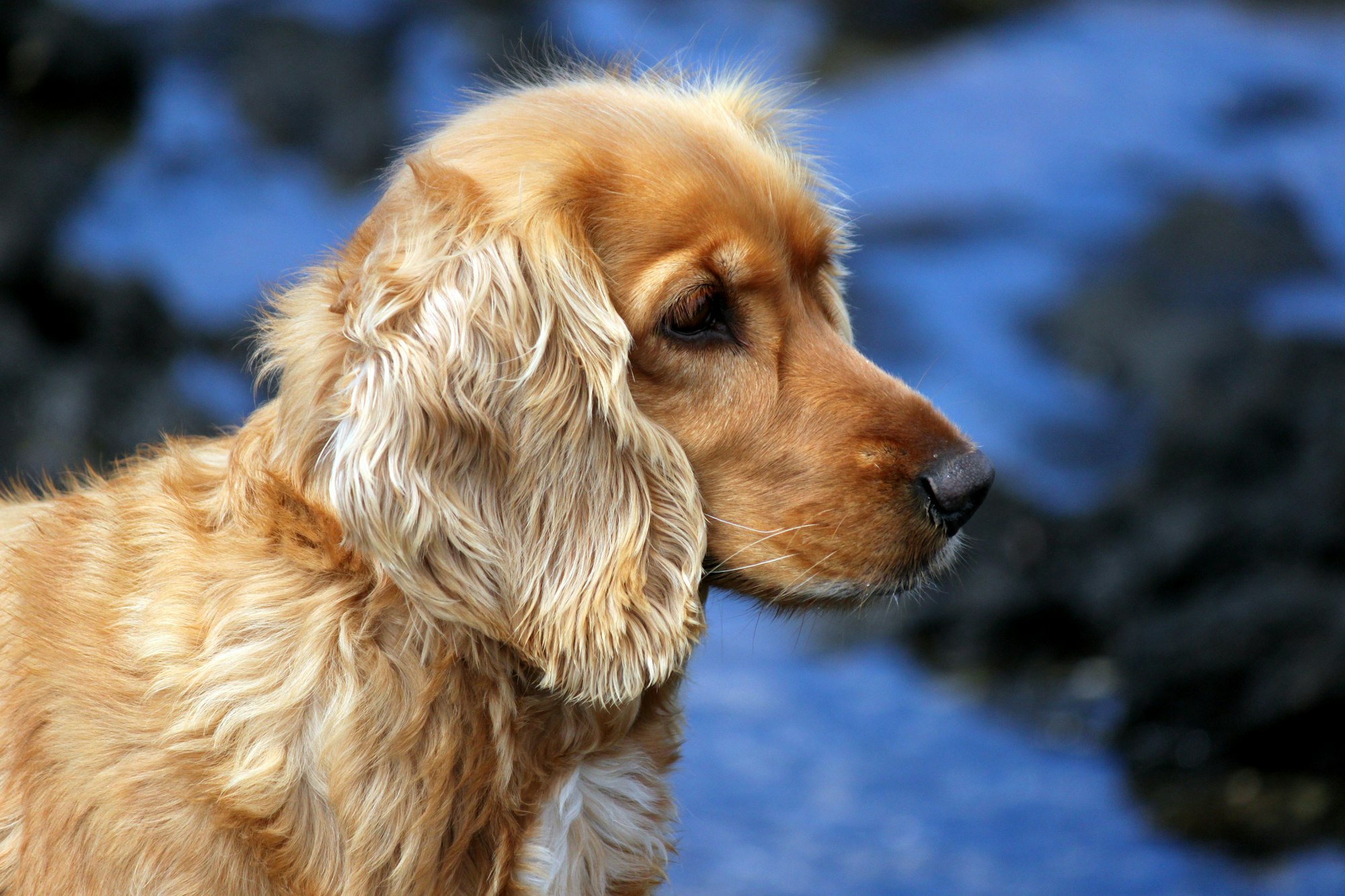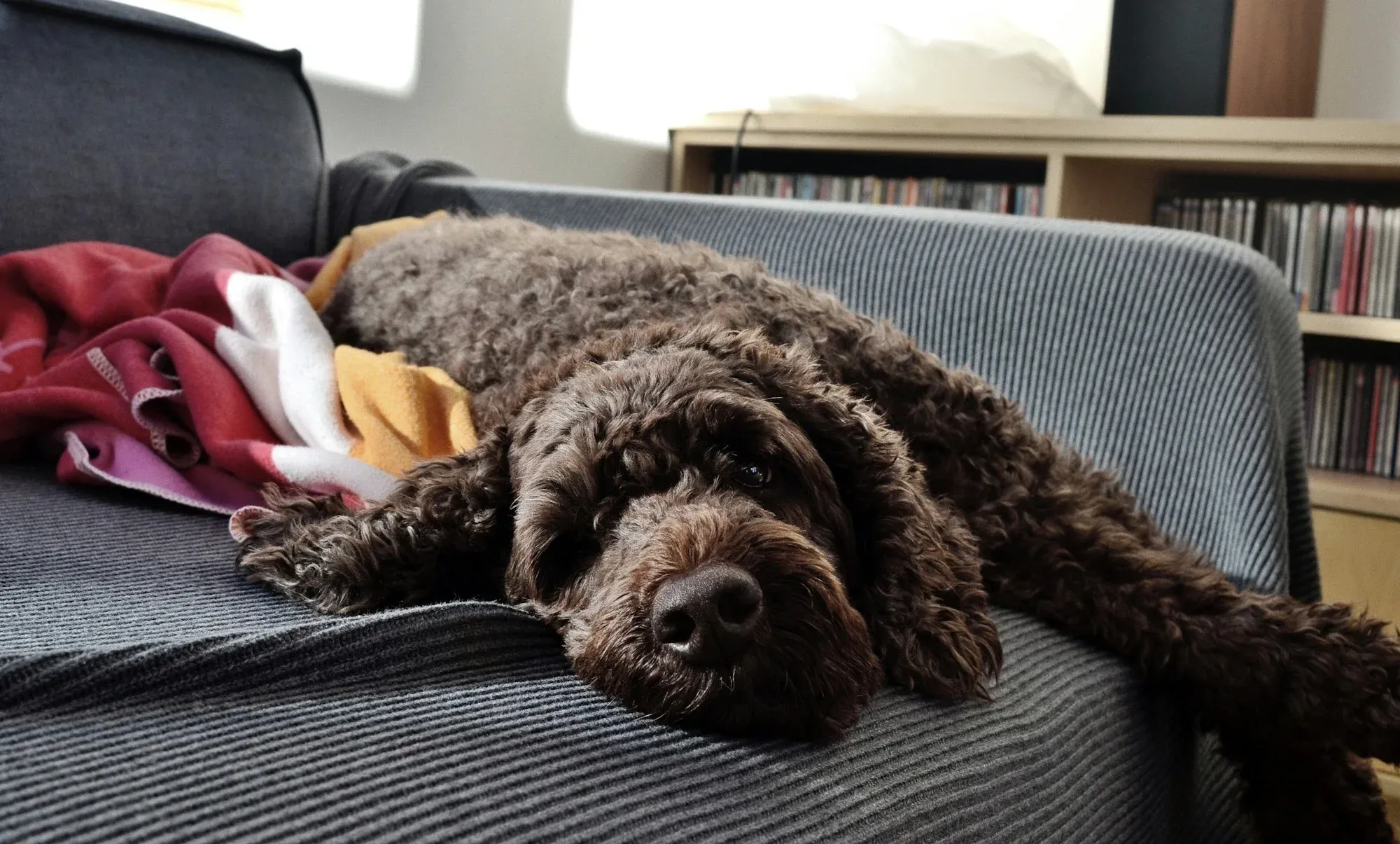Cocker Spaniels are beloved and popular dog breeds known for their beautiful and silky coats. If you are considering bringing a Cocker Spaniel into your home, it is important to understand their shedding patterns and coat care needs.

In this article, we will explore various aspects of Cocker Spaniel shedding and provide insights into managing their coat effectively.
Cocker Spaniels come in different coat types, including the American and English varieties. The American Cocker Spaniel typically has a denser and longer coat, while the English Cocker Spaniel has a shorter and thinner coat. Understanding the coat type of your Cocker Spaniel is essential in determining their shedding tendencies.
Cocker Spaniels are not considered hypoallergenic, and yes, they do shed. However, the extent of shedding can vary among individual dogs and is influenced by various factors.
Several factors can influence the shedding patterns of Cocker Spaniels. These factors include genetics, overall health and nutrition, environmental conditions, and grooming routines.
Understanding the types and amount of shedding in Cocker Spaniels can help you manage their coat effectively and minimize the impact of shedding in your home.
Cocker Spaniels typically shed throughout the year, but the frequency may vary. Some Cocker Spaniels may shed moderately all year round, while others may experience heavy shedding during specific seasons.

Many Cocker Spaniels experience a more significant shed twice a year, commonly known as "blowing their coat." This shedding usually occurs during spring and fall when they transition between their winter and summer coats.
While you cannot completely eliminate shedding in Cocker Spaniels, there are several strategies you can employ to manage and minimize it.
Regular grooming is crucial for Cocker Spaniels to keep their coats healthy and reduce shedding. Brushing their coat frequently helps remove loose hair and prevents mats and tangles.
A balanced and high-quality diet is essential for maintaining your Cocker Spaniel's coat health. Providing them with proper nutrition can promote a healthy coat and reduce excessive shedding.
Keeping your Cocker Spaniel clean and practicing good hygiene can help control shedding. Regular bathing, ear cleaning, and keeping their coat free from dirt and debris can contribute to a healthier coat.
Some Cocker Spaniels may have allergies that can contribute to excessive shedding. Identifying and managing any allergies can help minimize shedding and promote a more comfortable life for your furry friend.
There are several myths surrounding Cocker Spaniel shedding that need to be clarified. Understanding the truth behind these myths can help you make informed decisions and properly care for your Cocker Spaniel's coat.
By gaining knowledge about Cocker Spaniel shedding and implementing appropriate grooming and care practices, you can maintain a healthy and happy coat for your beloved Cocker Spaniel.
Key takeaways:
- Cocker spaniels shed: Yes, cocker spaniels do shed. However, the amount of shedding can vary depending on the individual dog and other factors.
- Factors affecting shedding: Various factors like coat type, diet, grooming, and allergies can influence the amount of shedding in cocker spaniels.
- Managing shedding: Regular grooming, a balanced diet, proper hygiene, and understanding allergies can help manage and reduce shedding in cocker spaniels.
Understanding Cocker Spaniel Coat Types
Understanding Cocker Spaniel Coat Types is crucial for grooming and maintenance. Here is a breakdown of the different coat types:
| Coat Type | Description |
| Flat | Smooth and medium length. Requires regular brushing to prevent matting. |
| Wavy | Loose, slightly curly. Benefits from regular brushing and occasional trims. |
| Curly | Tight, dense curls. Requires frequent grooming to prevent matting and regular trims. |
| Silky | Long, fine, and silky hair. Daily brushing and professional grooming are necessary. |
Understanding each coat type will help you determine the appropriate grooming routine and products for your Cocker Spaniel.
Do Cocker Spaniels Shed?
Curious about Cocker Spaniels shedding? Let's dive into the topic and explore the factors that can impact their shedding. From genetics to grooming practices, we'll uncover what makes these adorable dogs shed their fur. So, whether you're a proud Cocker Spaniel owner or considering adding one to your family, understanding the shedding process is key. Get ready to uncover some fascinating insights about Cocker Spaniel shedding!
Factors Affecting Cocker Spaniel Shedding
Factors Affecting Cocker Spaniel Shedding can be influenced by different factors including genetics, health, and environment. Some Cocker Spaniels may inherit a thicker or longer coat due to their Genetics, which may result in increased shedding. Health is also an important factor as nutritional imbalances or underlying health conditions can affect shedding. It is crucial to provide a balanced diet and schedule regular vet check-ups to ensure the overall well-being of your pet. Additionally, the environment can play a role in shedding patterns. Seasonal changes, indoor heating, or stress can contribute to shedding. To minimize shedding, it's essential to maintain regular grooming practices and ensure a clean living environment for your Cocker Spaniel.

Types and Amount of Shedding in Cocker Spaniels
Discover the fascinating world of shedding in Cocker Spaniels! From shedding frequency to seasonal patterns and effective management techniques, we will uncover all the hairy details in this section. Get ready to dive into the ins and outs of cocker spaniel shedding and learn how to keep those loose hairs under control. With practical tips and reliable information, you'll be well-equipped to handle any shedding challenges that come your way.
Shedding Frequency
Shedding frequency in Cocker Spaniels can vary based on several factors, such as their coat type and overall health. Here are some key points to keep in mind:
- Coat type: Cocker Spaniels have different coat types, including the curly and wavy coats. Curly-coated Cocker Spaniels tend to experience a lower shedding frequency compared to those with wavy coats.
- Seasonal shedding: The shedding frequency of Cocker Spaniels can also be influenced by the changing seasons. These dogs may undergo heavier shedding during the spring and fall as they transition their coats.
- Health and grooming: Maintaining regular grooming practices can effectively manage shedding in Cocker Spaniels. Regularly brushing their coat and utilizing appropriate grooming tools can help reduce loose hair and prevent matting.
Understanding the shedding frequency of Cocker Spaniels can assist pet owners in preparing for proper grooming and maintenance routines to ensure their furry friends remain comfortable and their homes stay clean.
Shedding Seasonality
Shedding seasonality in Cocker Spaniels is important to understand for proper grooming and maintenance. Here is a list to help you navigate this aspect:
- During shedding seasonality, Cocker Spaniels typically experience heavy shedding during seasonal transitions when their coats adapt to new weather conditions.
- Changes in temperature and daylight duration trigger hormonal shifts in dogs, leading to shedding.
- The amount of shedding can vary based on the length and density of the dog's coat. Longer and thicker coats may shed more.
- To control shedding, it is important to incorporate a regular brushing and grooming regimen to remove loose hair and prevent matting.
- Minimizing excessive shedding can be achieved by providing a balanced diet and addressing any underlying health issues.
Managing Shedding in Cocker Spaniels
Managing shedding in Cocker Spaniels can help keep their coat healthy and reduce the amount of loose fur in your home. Here are some tips to help manage shedding:
- Regular grooming: Brush your Cocker Spaniel's coat regularly to remove loose fur and prevent matting.
- Appropriate diet: Feed your dog a high-quality diet that promotes a healthy coat and skin.
- Proper hygiene: Keep your dog clean by bathing them regularly and using moisturizing shampoos.
- Understanding allergies and shedding: If your Cocker Spaniel has allergies, work with your vet to manage them, as allergies can contribute to excessive shedding.
By incorporating these practices into your routine, you can effectively manage shedding in your Cocker Spaniel and keep their coat looking its best.
Managing shedding in Cocker Spaniels is crucial to maintain their coat's health and minimize loose fur in your living space. Follow these helpful tips for shedding management in Cocker Spaniels: - Regular grooming: Regularly brush your Cocker Spaniel's coat to eliminate loose fur and prevent tangling. - Appropriate diet: Provide your dog with a high-quality diet specifically formulated to promote a healthy coat and skin. - Proper hygiene: Ensure your dog remains clean by regularly bathing them and utilizing moisturizing shampoos. - Understanding allergies and shedding: If your Cocker Spaniel suffers from allergies, collaborate with your vet to effectively manage them, as allergies can contribute to excessive shedding. Incorporating these practices into your routine will enable you to effectively manage shedding in your Cocker Spaniel and maintain its coat in optimal condition.
Regular Grooming
Regular grooming is crucial for managing shedding in Cocker Spaniels and ensuring the health and cleanliness of their coat. Here are some simple steps to follow for regular grooming:
- Brushing: Regularly brush your Cocker Spaniel's coat at least once a week to effectively remove loose hair and prevent matting.
- Bathing: It is important to give your dog a bath every 4-6 weeks using a gentle dog shampoo. This regular bathing routine helps to maintain their coat's cleanliness and keeps them smelling fresh.
- Trimming: Make sure to regularly trim your Cocker Spaniel's hair, especially around the paws and ears, in order to prevent mats and maintain a neat appearance.
- Nail Care: Regularly trim your dog's nails to prevent discomfort caused by them growing too long.
- Ear Cleaning: To prevent infections, it is essential to clean your Cocker Spaniel's ears on a regular basis. You can use a veterinarian-recommended ear cleaner along with cotton balls for this task.
- Tooth Care: Regularly brushing your dog's teeth is vital in preventing dental problems and promoting good oral hygiene.

Appropriate Diet
To effectively manage shedding in Cocker Spaniels, it is crucial to provide them with an appropriate diet. Here are some important considerations for their dietary needs:
- Opt for High-Quality Food: It is important to choose a premium dog food that is specifically formulated for Cocker Spaniels. This ensures that they receive the necessary nutrients to maintain a healthy skin and coat, thereby reducing shedding.
- Incorporate Omega-3 Fatty Acids: To promote skin health and minimize shedding, include foods that are rich in Omega-3 fatty acids, such as fish, flaxseed, and chia seeds.
- Prioritize a Protein-Rich Diet: Cocker Spaniels require a diet abundant in high-quality proteins like chicken, turkey, and fish. These proteins play a key role in supporting their coat health.
- Avoid Potential Allergens: It is important to identify and eliminate any potential allergens from your Cocker Spaniel's diet. Certain food allergies can contribute to excessive shedding.
- Maintain Hydration: Ensure that your Cocker Spaniel always has access to fresh and clean water. Adequate hydration is crucial for maintaining a healthy skin and coat.
Proper Hygiene
Proper hygiene is crucial for the management of shedding in Cocker Spaniels. Here are some essential steps to maintain their hygiene:
- Regular Bathing: It is important to bathe your Cocker Spaniel at least once every 4-6 weeks using a mild dog shampoo. This will help keep their coat clean and free from dirt and allergens.
- Brushing: Make sure to brush their coat regularly, ideally 2-3 times a week, using a slicker brush or a grooming comb. This will effectively remove loose hairs and prevent matting.
- Eye and Ear Cleaning: Take the time to clean their eyes with a damp cloth to eliminate any discharge or tear stains. Additionally, cleaning their ears weekly is crucial to prevent infections.
- Paw Care: It is necessary to regularly check and trim your Cocker Spaniel's nails to prevent overgrowth and discomfort. Moreover, clean their paws after walks to remove any dirt or debris.
- Dental Care: To maintain good oral hygiene and prevent dental issues, it is important to brush their teeth regularly using a dog toothbrush and toothpaste.
Understanding Allergies and Shedding
Understanding allergies and shedding in Cocker Spaniels is crucial for both the health of the dog and the comfort of its owner. To comprehend the impact of allergies and shedding in Cocker Spaniels is vital as it can have a significant effect on the well-being of the dog and the satisfaction of its owner. Some individuals may suffer from allergies triggered by the dander or fur of Cocker Spaniels, leading to potential respiratory or skin issues. In order to effectively manage these allergies, it is imperative to engage in regular grooming practices that not only minimize shedding but also eliminate allergens. Additionally, maintaining proper hygiene within the living environment and opting for allergy-friendly products are also crucial steps. By gaining a thorough understanding of allergies and shedding, Cocker Spaniel owners can create a healthier and more comfortable environment for both themselves and their beloved furry companions.
Fact: Did you know that Cocker Spaniels are renowned for being hypoallergenic, which makes them an excellent choice for individuals with allergies?
Common Myths about Cocker Spaniel Shedding

- Common Myth 1: Cocker Spaniels don't shed at all. In reality, all dogs shed, including Cocker Spaniels. They have a medium-length, silky coat that requires regular brushing to minimize shedding.
- Common Myth 2: Cocker Spaniels are hypoallergenic. While they may produce fewer allergens than some other breeds, they are not completely hypoallergenic. People with allergies should spend time with a Cocker Spaniel before bringing one home.
- Common Myth 3: Cocker Spaniels only shed during certain seasons. Shedding in Cocker Spaniels can be influenced by various factors, such as temperature, hormones, and overall health. They generally shed moderately throughout the year.
Fact: Cocker Spaniels are known for their beautiful, long ears that require regular cleaning to prevent ear infections.
Frequently Asked Questions
Q1: Do Cocker Spaniels shed?
Yes, Cocker Spaniels do shed. However, the amount they shed can vary depending on factors such as their coat, grooming habits, and overall health.
Q2: What kind of coat do Cocker Spaniels have?
Cocker Spaniels have a single coat that is thick and requires regular care. The texture of their coat can be silky, flat, or slightly wavy, giving them their distinctive appearance.
Q3: How often do Cocker Spaniels shed?
Cocker Spaniels tend to shed more during the spring and fall seasons. Their shedding frequency can also be influenced by factors such as age, diet, and overall health.
Q4: What can I do to keep shedding under control?
To keep shedding under control in Cocker Spaniels, regular grooming is important. This includes brushing the coat at least once a week to remove dead hair. It is also recommended to use high-quality dog food that contains omega-3 fatty acids, which can help improve coat health.
Q5: Are there any bonus tips for minimizing shedding in Cocker Spaniels?
Yes, here are some bonus tips for minimizing shedding in Cocker Spaniels:
- Regular exercise can help keep shedding under control.
- Consider adding fish oil supplements to your dog's diet, as they can promote a healthier coat.
- Schedule frequent grooming visits to ensure diligent care of your Cocker Spaniel's coat.
- Avoid stress-related shedding by keeping your dog in a calm and happy environment.
Q6: Can I prevent shedding in Cocker Spaniels completely?
No, shedding is a natural process for Cocker Spaniels and cannot be completely prevented. However, diligent coat maintenance and proper care can help minimize shedding and keep your Cocker Spaniel's coat in tip-top shape.

